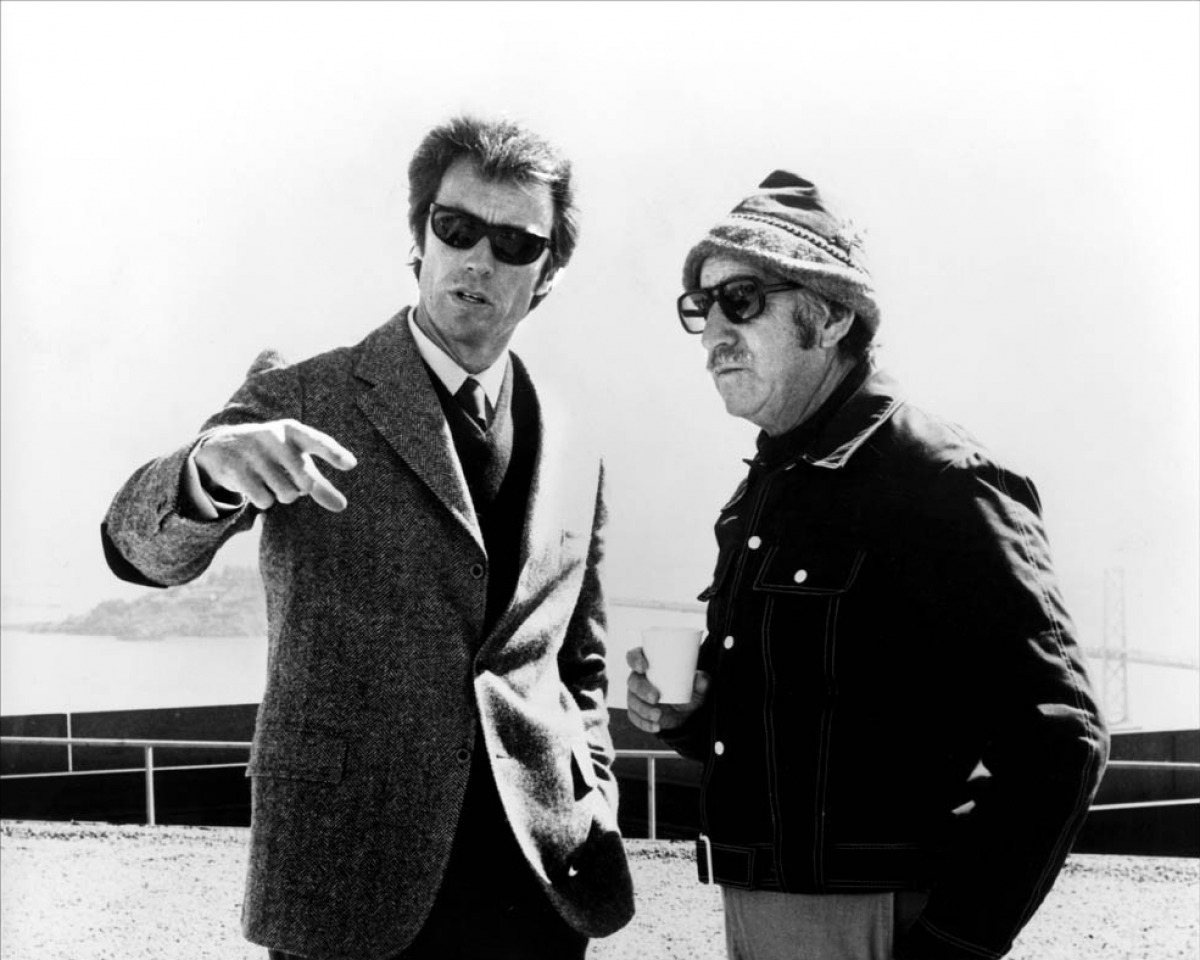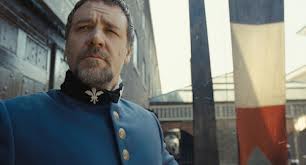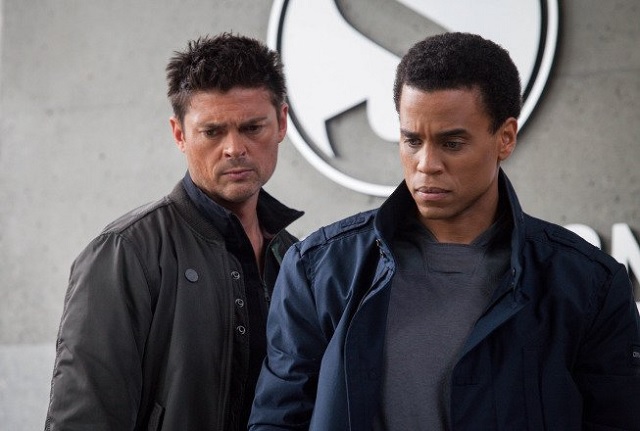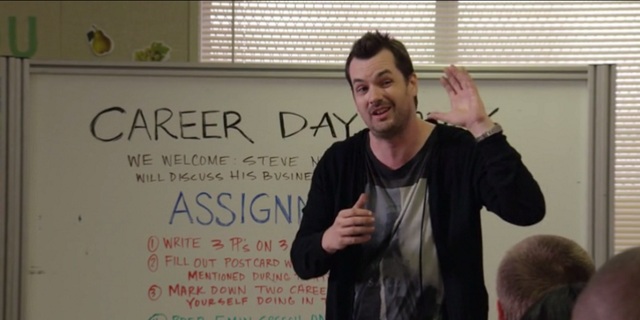Part I.
1971 was an incredibly violent year for movies. That year saw, among others, Tom Laughlin’s Billy Jack, with its half-Indian hero karate-chopping rednecks; William Friedkin’s The French Connection, its dogged cops stymied by well-heeled drug runners; Stanley Kubrick’s A Clockwork Orange, banned for the copycat crimes it reportedly inspired; and Sam Peckinpah’s Straw Dogs, featuring the most controversial rape in cinema history. Every bloody shooting, sexual assault and death by penis statue reflected a world gone mad.
It seemed a reaction to America’s skyrocketing crime. Between 1963 and 1975, violent crimes tripled; riots, robberies and assassinations racked major cities. The antiwar and Civil Rights movements generated violent offshoots like the Weathermen and Black Panthers. Citizens blamed politicians like New York Mayor John Lindsay (the original “limousine liberal”), who proclaimed “Peace cannot be imposed on our cities by force of arms,” and Earl Warren’s Supreme Court, whose stress on criminal rights culminated in capital punishment’s suspension in 1972.
Policemen complained against this permissive environment, culminating in an October 1970 demonstration where 3,000 police converged on Washington, D.C. But law enforcement abuses became increasingly publicized: Frank Serpico’s revelations of rampant NYPD corruption, Chicago’s “police riot” during the 1968 Democratic convention and murder of Black Panther leader Fred Hamilton, J. Edgar Hoover’s FBI wiretapping campaign. The line between policeman and criminal became disturbingly blurred.
So Americans turned to cinema for heroes. But movies and television increasingly reflected rather than eschewed reality, offering liberal disillusionment rather than answers. Thus the “silent majority” adopted unlikely heroes like All in the Family‘s bigoted Archie Bunker, or Peter Boyle’s Joe (1970), who massacred hippies while praising George Wallace. That these characters were slams on their hardhat mindset didn’t register.
In this heated context, Don Siegel and Clint Eastwood released their greatest collaboration. With Dirty Harry, they created an iconic hero – someone conservatives could unironically enjoy.
Part II.
 In the late ’60s, Harry Julian Fink and his wife Rita (R.M.), prolific television writers whose main film credit was Sam Peckinpah’s Major Dundee (1965), penned a script entitled “Dead Right.” It depicted an aging New York detective, Harry Callahan, tracking a psychotic sniper. Folded into their manhunt storyline was a slam on the Warren Court’s focus on criminal rights. It passed through several script doctors, including future directors Terence Mallick and John Milius, before becoming Dirty Harry.
In the late ’60s, Harry Julian Fink and his wife Rita (R.M.), prolific television writers whose main film credit was Sam Peckinpah’s Major Dundee (1965), penned a script entitled “Dead Right.” It depicted an aging New York detective, Harry Callahan, tracking a psychotic sniper. Folded into their manhunt storyline was a slam on the Warren Court’s focus on criminal rights. It passed through several script doctors, including future directors Terence Mallick and John Milius, before becoming Dirty Harry.
The Finks’ script became a hot property, passing from Universal to Warner Bros. Many of Hollywood’s leading men were asked to star. Frank Sinatra, who’d played a similar character in The Detective (1968), passed; so did Steve McQueen, fresh off Bullitt (1968). John Wayne disliked the script’s violence; Burt Lancaster and Paul Newman declined on political grounds. Newman reportedly suggested Clint Eastwood, the star of Sergio Leone’s Man With No Name Westerns, as a candidate.
Eastwood, in fact, had played a proto-Harry in Coogan’s Bluff (1968). That film takes the “cowboy cop” literally, featuring Clint as an Arizona sheriff extraditing a criminal from New York. The movie mixes fish-out-of-water jokes with graphic violence and reactionary attitudes: one scene features Clint bedding another man’s wife while locking an Indian suspect in his car without water. In New York he roughs up hippies, hookers and crooks like a one-man vice squad. This crude feature was a hit, giving Clint his first major non-Western role.
Coogan also paired Eastwood with director Don Siegel, a veteran of tight, efficient B movies: Riot in Cell Block 11 (1954), Invasion of the Body Snatchers (1956), The Killers (1964). After Coogan, they made Two Mules for Sister Sarah (1970), an anemic Leone pastiche, and The Beguiled (1971), a gothic Civil War melodrama. Siegel’s no-nonsense style appealed to Clint, who cited him as a directorial mentor: “He’s a man who does a lot with a little – so therefore our philosophies are pretty much akin.”
After The Beguiled flopped, Eastwood and Siegel latched onto Fink’s script. They brought Dean Reisner in to rewrite it again, relocating the story to San Francisco and chagning its ending. Dirty Harry proved an ideal vehicle for Eastwood, introducing his Man With No Name gunslinger persona into modern society. “Not once throughout Dirty Harry did Clint and I have a political discussion,” Siegel later claimed.
Part III.
The cowboy cop wasn’t a novel idea. Besides its TV incarnations, films noir like Where the Sidewalk Ends (1950) and The Big Heat (1953) featured progenitors of the trope. Bullitt kick-started the trend with ambivalence; Peter Yates conceived his hero as a burnt-out, reckless cynic, but Steve McQueen’s charisma overcomes viewer reservations. The French Connection‘s Popeye Doyle is a trigger-happy bigot who nonetheless seems the only one capable of foiling the villains.
Harry crystallized the archetype into its modern form. He manages a reactionary-hip fusion: he has the long hair and mod style of a rebel, mixed with blunt delivery and working class background. Walt Coogan’s rough edges are gone, his racism reduced to friendly ribbing of his Hispanic partner (Reni Santoni): he’s more annoyed that Chico’s a “college boy.” Where Coogan was a womanizer, Harry’s chaste: his wife died years before. He’s coarse whether chatting with his partner or addressing San Francisco’s Mayor (John Vernon). Harry’s a Barry Goldwater subversive, an individualist opposing bureaucratic emasculation.
Harry’s prolonged introduction establishes him as a Cop for All Seasons. In his first scene, he examines Scorpio’s first victim and immediately intuits his location, finding a telltale shell casing. Soon after he’s briefing the Mayor and Police Chief (John Larch), explaining his philosophy to the disbelieving bureaucrats: “When a naked man is chasing a woman through an alley with a butcher knife and a hard-on, I figure he isn’t out collecting for the Red Cross.”
Then comes Dirty Harry‘s defining scene. Scarfing down a hotdog, he witnesses a bank robbery and coolly blows away three criminals with his revolver. He corners a fourth (Albert Popwell), badly wounded. As the criminal reaches for a shotgun, Harry unleashes an immortal monologue:
Now I know what you’re thinking. Did he fire six shots, or only five? Now to tell you the truth, I lost track myself in all this excitement. But seeing as this is a .44 Magnum, the most powerful handgun in the world, and it could blow your head clean off, you’ve got to ask yourself one question: “Do I feel lucky?” Well do you, punk?
Eastwood plays this scene with a sly grin and playful sadism, daring the criminal to shoot him. He’s instantly transformed from routine rebel to avatar of cool, a masculine fantasy (huge gun and ready wit) made flesh, tougher than McQueen, harder than John Wayne. Who better to save Americans from criminals, hippies, black militants and progressive weenies?
Yet Harry isn’t an amoral gunfighter like the Man With No Name. His code obliges him to protect the innocent and punish the guilty, regardless of the consequences. Hence his reckless, violent actions pursuing Scorpio: he’ll demote himself to bagman, endure a beating, shoot an unarmed criminal to uphold right. “And Mary Ann Deacon, what about her rights?” he asks when his superiors grill him over abusing Scorpio. “Who speaks for her?”
If Harry’s a “fascist,” as his detractors claim, he’s an unusually moral one. He’s not after power or ideology but society’s protection: he’s not gunning down innocent people, letting Scorpio draw first. What troubled critics in 1971 – and still bothers liberals today – isn’t Harry’s attitude but the film’s speechmaking. Harry’s immediate progenitor, Frank Bullitt, was victimized by an unscrupulous politician. Dirty Harry casts its net much wider.
Part IV.
Dirty Harry starts with a gauntlet thrown square at viewers: the camera pans down a memorial to fallen SFPD officers. Dissolve to an extreme close-up of Scorpio’s rifle stalking his first victim. Thus Siegel immediately stakes the conflict: police are the only thing standing between civilization and chaos. The film enhances general attacks on liberalism with real-world parallels.
The film draws on the Zodiac Killer, who menaced San Francisco in the early ’70s: his name, self-aggrandizing letters and threats to hijack a school bus find their way into Scorpio. Zodiac’s main investigator was Dave Toschi, the bow tie-wearing inspector who inspired Bullitt. (Toschi met Eastwood during production, considering him “an almost shy person.”) That case ran afoul of red tape and sensationalist media coverage, allowing the killer to escape. Dirty Harry‘s solution is to eschew bureaucracy and let cops do their jobs.
On its own, a reasonable message. Yet Dirty Harry states its argument as subtly as a Stanley Kramer movie. For one, Scorpio (a wonderful Andy Robinson) is such a squirm-inducing psychopath there’s no room for sympathy. He becomes a law-and-order hate figure: long-haired, sporting a peace-sign belt buckle and spouting anti-police epithets, he’s explicitly identified with the era’s counterculture. For added nastiness, he spouts racial slurs. This creep isn’t worth due process: he should be exterminated.
 Siegel, a self-described progressive, claimed that “the cop is just as evil, in his way, as the sniper.” This surfaces when Harry corners Scorpio at a football stadium. With the criminal begging for his life, Harry shoots him in the leg and tortures him to reveal his victim’s whereabouts. Even if justified, Harry seems less righteous than sadistic. And Siegel’s staging of this confrontation, ending with a dizzying zoom-out and distorted music, suggests Harry’s not as heroic as we once thought.
Siegel, a self-described progressive, claimed that “the cop is just as evil, in his way, as the sniper.” This surfaces when Harry corners Scorpio at a football stadium. With the criminal begging for his life, Harry shoots him in the leg and tortures him to reveal his victim’s whereabouts. Even if justified, Harry seems less righteous than sadistic. And Siegel’s staging of this confrontation, ending with a dizzying zoom-out and distorted music, suggests Harry’s not as heroic as we once thought.
The next scene, however, dissipates rather than reinforces this ambiguity. San Francisco’s District Attorney (Josef Sommer) chews Harry out for his treatment of Scorpio, claiming he’s violated the Constitution’s Fourth Amendment, Miranda v. Arizona (suspects must be informed of rights) and Escobedo v. Illinois (right to counsel under questioning). The latter two cases, key rulings of the Warren Court, were cornerstones of conservative resentment against judicial activism.
Next, the DA brings in an appellate Judge (William Patterson) who teaches at Cal Berkeley. Mentioning America’s most left-wing university paints the Judge as an over-permissive liberal before he opens his mouth. Right-wing viewers could disregard his comments as criminal coddling, however well-founded. Harry responds that “the law’s crazy,” sarcastically growling that “I’m all busted up over that man’s rights.”
 This scene strains credulity. Even if Harry obtained evidence during Scorpio’s capture without a warrant, the killer had attacked Harry and wounded his partner shortly beforehand. Nor is it likely that a suspected murderer would walk scot-free without questioning or arraignment. Harry’s actions could be excused under situational ethics: this sequence reduces the debate of criminal vs. victim’s rights to a cartoon.
This scene strains credulity. Even if Harry obtained evidence during Scorpio’s capture without a warrant, the killer had attacked Harry and wounded his partner shortly beforehand. Nor is it likely that a suspected murderer would walk scot-free without questioning or arraignment. Harry’s actions could be excused under situational ethics: this sequence reduces the debate of criminal vs. victim’s rights to a cartoon.
Certainly Scorpio doesn’t deserve the DA’s goodwill. He pays a thug to rough him up and blames it on Harry. Then he hijacks a school bus and demands an outrageous ransom. Eventually, Harry disobeys orders and single-handedly rescues the kids, killing Scorpio. At film’s end he tosses his badge into the lake; Harry, the enlightened Individual, has no use for an ineffectual system.
Part V.
Dirty Harry premiered on December 22nd, 1971 at Loews Theater in San Francisco, at a benefit for the Police Athletic League. Eastwood and Siegel attended, along with Mayor Joseph Alioto, several dozen policemen and a bevy of local celebrities. Members of the Progressive Labor Party protested the premiere, waving signs reading “Cops are no pals to Clarence Johnson.” Not all the attendees appreciated Harry, either: Dave Toschi, Harry’s real-life counterpart, left the screening halfway through.
Critics couldn’t wait to attack, led inevitably by Pauline Kael. The New Yorker critic compared the film to Ayn Rand’s The Fountainhead, calling it “a remarkably single-minded attack on liberal values.” She then compared the film’s San Francisco to her real-life experience, noting that her generation considered SFPD cops crooks or thugs. Kael then deployed her favorite insult: “This action genre has always had a fascist appeal, and it has finally surfaced.”
Kael’s diatribe highlights her selective moralism. After all, she’d praised Bonnie and Clyde (1967) for its stylized, graphic violence. Soon after excoriating Dirty Harry, she lauded Peckinpah’s Straw Dogs as a “fascist work of art.” Andrew Sarris mocked Kael as a “vicarious radical who would argue that a cop killing a crook… is repression whereas a crook killing a cop is revolution.”
Regardless, Sarris called Dirty Harry “one of the most disturbing manifestations of police paranoia I have ever seen.” Roger Ebert agreed with Kael that “the film’s moral position is fascist,” though he praised its entertainment value. And Variety labeled it a “phony glorification of police and criminal brutality.” Criticism spread outside newspapers: the ACLU condemned the movie, while protestors picketed screenings proclaiming “Dirty Harry is a rotten pig.”
 The filmmakers recoiled at this reaction. Eastwood complained that “some people are so politically oriented, when they see cornflakes in a bowl, they get some complex interpretation out of it.” Yet he also pegged its appeal: “The general public isn’t worried about the rights of the killer; they’re just saying get him off the streets.” Siegel was more nuanced, calling Harry “a genuine hero whose attitudes I abhor.”
The filmmakers recoiled at this reaction. Eastwood complained that “some people are so politically oriented, when they see cornflakes in a bowl, they get some complex interpretation out of it.” Yet he also pegged its appeal: “The general public isn’t worried about the rights of the killer; they’re just saying get him off the streets.” Siegel was more nuanced, calling Harry “a genuine hero whose attitudes I abhor.”
Other viewers ignored critical self-righteousness. Richard Nixon screened Dirty Harry at the White House and invited Eastwood for an Oval Office reception. More humble viewers agreed, cheering as Harry tortured Scorpio, laughing at his one-liners and sneering at his superiors. Kael, who saw Harry with a Puerto Rican audience, admitted it was “cheered and applauded… they jeered… when the maniac whined and pleaded for his legal rights.”
Ultimately, Dirty Harry made nearly $36,000,000 against its $4,000,000 budget, making it 1971’s fourth highest-grossing film. So much for Kael’s outrage.
 Today it’s easier to appreciate Dirty Harry. Siegel’s direction is stylish yet efficient: he shoots with perfect spacing and suspense, from Harry’s desperate telephone runs to the tense finale. The San Francisco setting, contrasting its picturesque appearance with squalid crimes, contrasts nicely with New York’s grimy despair, already cliched in crime films: witness the opening, with Harry backgrounded by a panoramic shot of San Francisco Bay. Lalo Schiffrin’s driving, scatty jazz fusion score is among the ’70s best, underscoring Harry’s character and the film’s drama.
Today it’s easier to appreciate Dirty Harry. Siegel’s direction is stylish yet efficient: he shoots with perfect spacing and suspense, from Harry’s desperate telephone runs to the tense finale. The San Francisco setting, contrasting its picturesque appearance with squalid crimes, contrasts nicely with New York’s grimy despair, already cliched in crime films: witness the opening, with Harry backgrounded by a panoramic shot of San Francisco Bay. Lalo Schiffrin’s driving, scatty jazz fusion score is among the ’70s best, underscoring Harry’s character and the film’s drama.
Divorced from its context, Dirty Harry‘s become a universal classic, respected by modern critics and beloved by audiences, its set pieces, quotes and protagonist absorbed into public consciousness. Eastwood revisited the character in four sequels, while later films from The Gauntlet through Gran Torino play as variations on Harry. Yet as recent events demonstrate, debates over police violence and criminals’ rights are far from settled.
Sources:
Marc Elliot, American Rebel: The Life of Clint Eastwood (2009); J. Hoberman, The Dream Life: Movies, Media and the Mythology of the Sixties (2003); Patrick McGilligan, Clint: The Life and the Legend (1999); Richard Schickel, Clint Eastwood: A Biography (1996); Don Siegel, A Siegel Film: An Autobiography (1993).












